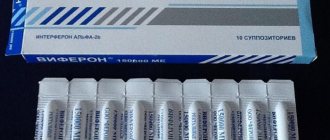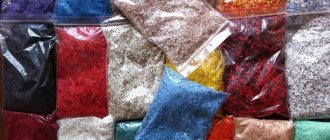From this article you will learn:
- drug Zenerit – composition, analogues,
- detailed instructions for use,
- reviews of Zinerit from dermatologists.
Zineryt for acne (Zineryt) is an antibacterial drug in the form of a solution for external use, containing the antibiotic erythromycin + zinc acetate complex. The drug is used to treat papulopustular acne (pimples). It is produced in the Netherlands, but the trademark on Zineryt® already belongs to (Denmark).
Zinerit is available in pharmacies without a doctor's prescription. It can be used in adults and children over 12 years of age. The antibiotic erythromycin is a long-known macrolide antibiotic and has been used to treat acne for more than half a century. This is due to its high activity against the bacteria Propionibacterium acnes and Streptococcus epidermidis, which are involved in the development of acne.
Reviews of the drug Zinerit from dermatologists have always been good, until recently, but recently there have been many reports of increasingly frequent cases of resistance of Propionibacterium acnes bacteria to macrolide antibiotics (according to the most authoritative textbook on dermatology, Fitzpatrick's Dermatology). Exactly the same data is reflected in many monographs and scientific works of Russian doctors.
How much does Zinerit cost in pharmacies:
The price for the drug Zinerit in pharmacies starts from 587 rubles (the price is indicated for 2021). Moreover, this is significantly lower than just a few years ago. Of course, the reason for this is the smaller number of prescriptions of this drug by dermatologists to their patients with acne. However, the drug cannot be considered completely irrelevant.
Indications for use –
The Zinerit instruction contains only 1 indication for the use of the drug - this is “acne treatment”. But in fact, this requires an important explanation, because... The instructions are written frankly illiterately. With acne, we have only non-inflammatory elements - these are either whiteheads (closed comedones) or blackheads (open comedones). Antibiotics are generally not used to treat non-inflammatory elements of acne.
Antibiotics are needed to treat specifically the papulopustular form of acne (pimples). It is in this case that we have inflammatory elements - papules and/or pustules, which we will treat with antibiotics. In addition, we will use topical antibiotics only for papulopustular acne of mild or moderate severity, because in severe cases, antibiotics are prescribed only orally (in tablets).
Active ingredients
The main components of Zenerite are:
- zinc acetate - helps prevent clogging of pores with keratinized masses, eliminates the “gloss” of the skin;
- erythromycin - suppresses the activity of bacterial microflora (reduces the number of P. acnes and Streptococcus epidermidis, which are directly involved in the development of inflammatory elements of acne) and normalizes the functioning of the sebaceous glands (hyperfunction is eliminated, the secretion becomes more viscous).
The drug has a general anti-inflammatory effect, due to which the severity of the main symptoms of acne is significantly reduced.
Zenerit: composition and release form
Zinerit instructions for use tell us that the packaging of the drug consists of 2 bottles, as well as an applicator for applying the drug. The bottles must be mixed immediately before the 1st use. Keep in mind that after mixing the components of the drug, the finished solution can be stored (at a temperature of 15° to 25°C) and used for no more than 5 weeks.
Composition of bottles 1 and 2 –
| Bottle No. 1 (dry mixture): antibiotic erythromycin - 1.2 g, zinc acetate - 360 mg. |
| Bottle No. 2 (solvent): ethanol – 17.1 ml, diisopropyl sebacate – 7.8 ml. |
After diluting the dry mixture, we get 30 ml of the finished solution. Thus, the content of active components in 1.0 ml of solution will be –
- antibiotic erythromycin – 40 mg,
- zinc acetate – 12 mg,
- ethanol – 0.55 g,
- diisopropyl sebacate – 0.25 g.
→ Zinerit instructions for use (official, in FDF format)
Composition analysis –
Erythromycin belongs to the macrolide group of antibiotics. This antibiotic is especially effective against the bacteria Propionibacterium acnes and Streptococcus epidermidis, which play an important role in the development of inflammation and the formation of acne (papules and pustules). It should be noted that after application, only a very small part of erythromycin enters the systemic circulation (24stoma.ru).
Zinc helps reduce the production of sebaceous gland secretions (sebum), and also increases the sensitivity of pathogenic bacteria to erythromycin. In general, the addition of zinc to the composition allowed the manufacturer to reduce the number of cases of the formation of resistance of Propionibacterium acnes bacteria to erythromycin. Nevertheless, statistics clearly indicate that cases of resistance to erythromycin (even with zinc) are much more common than cases of resistance to drugs based on the antibiotic clindamycin.
How to store
The product is intended for storage at home. The best option is a refrigerator both before preparing the solution and after. It is advisable to have the top shelf in the door, since the permissible temperatures are from +15°C to +25°C.
It is not recommended to leave Zinerite exposed to sunlight or at room temperature, especially in the summer months; it should not be frozen or, conversely, exposed to heat. Keep undissolved powder away from moisture.
Analogue drugs:
- Aknesept;
- Zerkalin;
- Dalatsin;
- Ugricil;
- Nadoxin.
How to use Zenerit: instructions
The drug is used 2 times a day: in the morning (necessarily before applying makeup) and in the evening after washing before bed. The course of treatment is 10-12 weeks (however, good results are achieved after 2 weeks of using the drug). The rest of the time is necessary to consolidate the results of therapy.
Preparation and use of the drug –
The contents of the solvent bottle must be completely poured into the dry powder bottle. After this, the bottle must be shaken until the powder is completely dissolved in the solvent. After this, the bottle can be closed with a lid with an applicator.
What does the Zinerit applicator look like:
Step-by-step instructions: 1) The packaging of the drug contains two bottles and one applicator. 2) First, open the caps of both bottles, keeping the cap of bottle A containing the powder. 3) The solvent from bottle B must be poured into bottle A with powder. 4) Close bottle A (with powder and solvent) with a cap. 5) Shake bottle A for 1 minute. 6) Remove the cap from bottle A and attach the applicator to the bottle. 7) Push the cap that contains the applicator into the full bottle and close tightly. Open the cap of the bottle and check that the applicator is securely attached. 9) Write the date of mixing the drug on the bottle (the prepared solution can be used within 5 weeks).
Open the cap of the bottle and check that the applicator is securely attached. 9) Write the date of mixing the drug on the bottle (the prepared solution can be used within 5 weeks).
To apply the drug, you need to tilt the bottle with the applicator down. The pressure applied controls the speed at which the solution is applied to the skin. The solution is colorless and therefore will not be noticeable after drying. The drug is intended for external use only (for application to the skin).
Composition of Zenerite
Zinerit contains two bottles with a complex of drugs and a solvent, intended for further mixing.
The first bottle of the drug complex includes 1200 mg of erythromycin and 360 mg of micronized zinc acetate dihydrate
– active ingredients.
The second bottle of solvent includes 8.36 ml of diisopropyl sebacate and 21.6 ml of ethanol - additional components.
1 milliliter of prepared lotion consists of 40 mg of erythromycin and 12 mg of micronized zinc acetate dihydrate
, as well as 250 mg of diisopropyl sebacate and 550 mg of ethanol.
Zinerit: reviews from a dermatologist
On the drug Zinerit for acne - reviews from dermatologists and researchers at medical universities increasingly boil down to the fact that every year more and more strains of the bacteria Propionibacterium acnes are discovered that are insensitive to this drug. The reason for this is largely due to the over-the-counter availability of the drug (this means the possibility of advertising on TV), which potentiates the uncontrolled use of this drug by patients - as a means of self-treating acne at home.
You may suspect Propionibacterium acnes bacteria are resistant to Zinerit if you do not notice an effect from therapy within 2 weeks of use. The downside is the possibility of developing cross-resistance - when the development of resistance to erythromycin can automatically lead to microflora resistance to other antibiotics, for example, clindamycin.
There is a large list of scientific papers on Propionibacterium acnes resistance to erythromycin. For example, Barinova A.N. “Modern methods of treatment and rehabilitation of patients with acne vulgaris” (Federal State Budgetary Educational Institution of Higher Education “North-Western State Medical University named after Mechnikov” of the Ministry of Health of Russia, St. Petersburg). We quote: “The use of erythromycin is currently limited due to the large number of resistant strains of Propionibacterium acnes.” And there are a lot of studies with the same conclusions.
Important: In addition, we do not recommend using this medication for patients with dry or sensitive skin. The drug contains ethyl alcohol as a solvent, therefore we will get even more drying of the skin. The drug is better suited for patients with oily skin.
Zinerit: analogues of the drug
An analogue of Zenerit for acne is cheaper - this is a drug from the Russian pharmaceutical company Arpimed, which produces a similar product - “2% erythromycin solution” for external use. However, this solution has only a 2% concentration of erythromycin, which corresponds to a dosage of 20 mg per 1 ml (this is 2 times lower than in the drug Zinerit), and in addition, the drug does not contain zinc. Accordingly, all this will mean a very rapid development of bacterial resistance to erythromycin.
Side effects -
In some cases, slight redness, dryness and flaking of the skin, tingling or burning may occur at the site of use of the drug. Such effects are normal and do not require discontinuation of the drug.
Contraindications for use –
You should not use Zinerit if you have a hypersensitivity (allergy) to erythromycin or other macrolide antibiotics, as well as to zinc or other components of the drug.
Use during pregnancy and breastfeeding –
The use of the drug during breastfeeding and pregnancy is possible if the recommended dosage of application is observed (no more than 0.5 ml per 1 application). The safety of the drug is due to the fact that erythromycin practically does not penetrate the skin and does not enter the systemic bloodstream. Studies have not revealed a negative effect of the drug on the fetus.
Pharmacodynamics and pharmacokinetics
Zenerite is an erythromycin-zinc
a complex preparation characterized by
anti-acne effectiveness, which is manifested due to the combined effect of its active ingredients.
Effects of the antibiotic erythromycin
are aimed at suppressing the replication
of microorganisms (bacteriostatic effect) that cause acne
(
acne
):
epidermal streptococcus
(Streptococcus epidermidis) and
propionibacterium acne (Propionibacterium acne).
Zinc activity
lies in its
astringent
effect and reducing
the secretion of the sebaceous glands
(sebum).
The complex combination of all the ingredients of the drug creates good conditions for their penetration into the skin. The bulk of zinc binds to follicular epithelial cells
and does not penetrate into the systemic circulation.
A small fraction of erythromycin undergoes systemic absorption and is subsequently excreted from the human body.
Zenerit or Baziron: which is better?
Baziron contains a highly effective bactericidal component for the treatment of acne, such as benzoyl peroxide. To date, there are no strains of bacteria that are resistant to benzoyl peroxide and are associated with the development of acne. But the choice between these drugs is not as simple as it seems - it all depends on the type of inflammatory elements.
Let us remind you that acne can be in the form of papules or pustules (with pus). If you mainly have only papules that do not contain pus, it is optimal to use a combination of “benzoyl peroxide + topical retinoid” (for example, Baziron + Clenzit). If you have acne in the form of pustules with pus, then you need a combination of “benzoyl peroxide + antibiotic + topical retinoid”. These are the treatment protocols that are professional, and you can familiarize yourself with them using the link below.
Why is it important to give benzoyl peroxide along with an antibiotic for pustules? Studies have shown that in this case, not only the effectiveness of therapy increases, but also the risk of the bacteria Propionibacterium acnes developing resistance to the antibiotic is sharply reduced.
→ International acne treatment protocols → International acne treatment protocols
Which is better: Skinoren or Zenerit
Skinoren belongs to the group of drugs based on azelaic acid. Drugs in this group are used to treat acne, and not to treat papulopustular acne (pimples). In turn, antibacterial drugs are used only to treat either acne or nodules. Therefore, it is simply pointless to compare the effectiveness of these drugs - each of them is designed to treat different forms of acne. We hope that our article on the topic: Does Zinerit help with acne was useful to you!
Sources:
1. Textbook of dermatology “Fitzpatrick's Dermatology” (8th edition), 2. “Modern methods of treatment and rehabilitation of patients with acne vulgaris” (Barinova), 3. “Acne from the position of evidence-based medicine” (Anisimova), 4. “Cellular mechanisms of barrier protective functions of the skin and their disorders in skin diseases” (Medelets).








